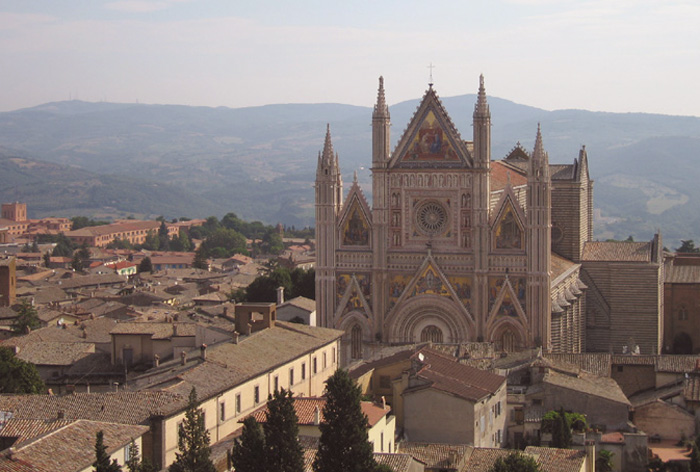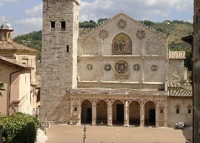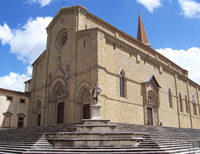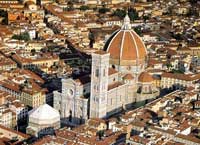Orvieto
|
|
|
. |
||||
Montecucco wine region |
Castel Viscardo |
Lago Corbara and Orvieto |
||
Spoleto, Duomo |
Arezzo Duomo |
Firenze, Duomo |
||
Italy has a great number of cathedrals, many of them in the Tuscany region. There isn't one single city in Tuscany known as the "Cathedral City," but many Tuscan cities have cathedrals. Many of the cathedral churches are important architectural, historical and ecclesiastical monuments filled with significant works of art, and those in Florence, Pisa, Siena and Lucca are among the most beautiful in all of Italy. "Duomo" is the Italian word for cathedral. The word "cathedra" in Latin means a chair or throne, and the Greek "kathedra" means a seat. Cathedrals are consecrated by the Roman Catholic Church. A church must meet certain criteria in order to be designated as a cathedral. A cathedral is the official church where a bishop holds his permanent episcopal throne. From an administrative standpoint, it is the mother church of a diocese. The Duomo of Florence Florence's Duomo is one of the most familiar sites in Italian architecture. Filippo Brunelleschi's grand dome dominates the city skyline and is one of the most important feats of engineering and architecture from the Renaissance era. The rest of the building was designed in 1334 by Giotto, who was also famous as a painter. It is the fourth largest cathedral in the world. Visitors with the strength to climb the 463 steps to the top of the dome are rewarded with panoramic views of all of Florence. The Duomo of Pisa The Duomo of Pisa is overshadowed by its more famous neighbor, the Leaning Tower (the Campanile). The entire Piazza del Duomo complex contains four medieval masterpieces, the Duomo, baptistery, campanile, and Campo Santo Cemetery, all built between the 11th and 14th centuries. The square was designated a UNESCO World Heritage Center in 1987 and is also known as the Campo dei Miracoli (Square of Miracles). The cathedral's architecture is a unique mix of Romanesque and Pisan styles. The Duomo of Siena Siena's cathedral is considered one of the great examples of Italian Gothic architecture. Siena's Duomo is an imposing example of Romanesque architecture whose façade was completed in 1380. Inside the sacristy are well-preserved frescoes by Ghirlandaio and an elaborately decorated pavement. One of the cathedral's main attractions is the Piccolomini Library, commissioned by Archbishop Piccolomini of Siena (later Pope Pius III). The library houses an important book collection and is decorated by mythological scenes by the painter Pinturicchio. The Crypt (Cripta) was discovered during restoration works in 1999 and is filled with frescoes dating back to the 1200s, buried and preserved for seven centuries. The Duomo of Lucca Lucca's Duomo di San Martino was consecrated in 1070. Pilgrims come to pray at the Volto Santo (Holy Face) of Lucca, a wooden crucifix alleged to have been carved by Nicodemus, who helped remove the body of Christ from the cross. Legend says that Nicodemus never carved the face but instead he awakened one morning to find the face miraculously carved by an angel. Another highlight of the Duomo is the marble tomb of Ilaria del Careretto, the wife of one of Lucca's ruler. Ilaria's tomb is a tourist favorite because of its carving of her faithful little dog resting at her feet. |
||||
This page uses material from the Wikipedia article Orvieto, published under the GNU Free Documentation License. |
||||










